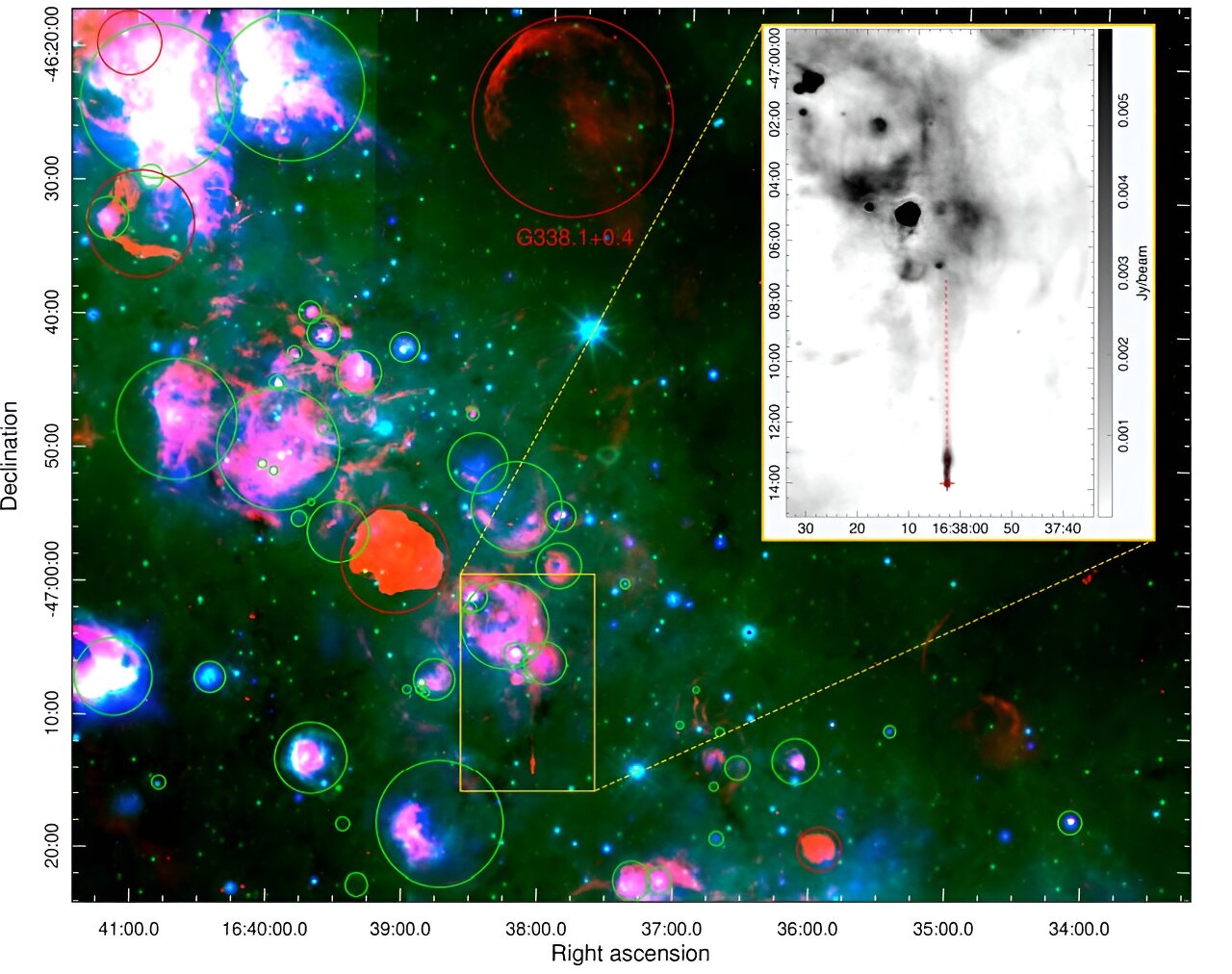
Astronomers from the Western Sydney University in Australia and elsewhere report the detection of a new pulsar wind nebula and a pulsar that powers it. The discovery, presented in a paper published Dec. 12 on the pre-print server arXiv, was made using the Australian Square Kilometer Array Pathfinder (ASKAP), as well as MeerKAT and Parkes radio telescopes.
Pulsar wind nebulae (PWNe) are nebulae powered by the wind of a pulsar. Pulsar wind is composed of charged particles; when it collides with the pulsar’s surroundings, in particular with the slowly expanding supernova ejecta, it develops a PWN.
Particles in PWNe lose their energy to radiation and become less energetic with distance from the central pulsar. Multiwavelength studies of these objects, including X-ray observations, especially using spatially-integrated spectra in the X-ray band, have the potential to uncover important information about particle flow in these nebulae. This could unveil important insights into the nature of PWNe in general.
Now, a team of astronomers led by Western Sydney University’s Sanja Lazarević has found a new pulsar wind nebula in radio-continuum surveys obtained from ASKAP and MeerKAT. They dubbed the new PWN “Potoroo,” after a small marsupial native to Australia.
Next, using the Parkes Ultra-Wideband Low (UWL) frequency receiver system, they detected the pulsar candidate, which received designation PSR J1638–4713. Further observations of PSR J1638–4713 confirmed that it powers the Potoroo.
The observations show that Potoroo exhibits distinctive cometary morphology in both radio and X-ray band. This suggests that the pulsar leads the PWN and travels supersonically through the ambient medium.
“For the pulsars that are propelled through the ambient medium at supersonic velocities, the resulting ram pressure transforms the PWN into a bow-shock. This process confines the pulsar wind in the opposite direction to that of the pulsar motion, forming a cometary-like shaped tail,” the authors of the paper explained.
According to the study, Potoroo is located at a distance of at least 32,500 light years, has a radio size of about 68.5 light years, while its X-ray size appears to be 10 times smaller. Therefore, Potoroo has the longest PWN radio trails known to date.
The results indicate that Potoroo has an unusually steep overall radio spectrum—at a level of -1.27. This is below the typical values for the known PWNe. The astronomers suppose that such a steep overall spectral index may be due to the interaction of the parent supernova reverse shock with the PWN.
When it comes to PSR J1638–4713, it has a spin period of 65.74 milliseconds and a dispersion measure of 1,553 pc/cm3—the second highest among all known radio pulsars. The observations found that PSR J1638–4713 is a young pulsar (with a characteristic age of 24,000 years), has a high spin-down luminosity, and a large projected velocity, exceeding 1,000 km/s. https://phys.org/news/2023-12-astronomers-pulsar-nebula.html









Recent Comments